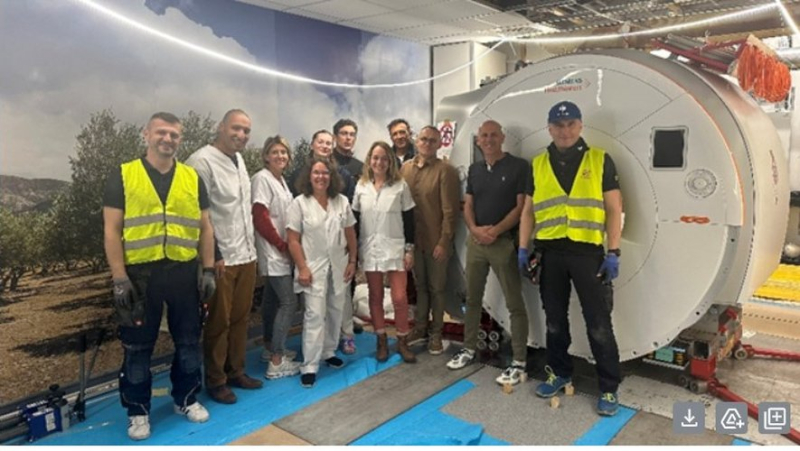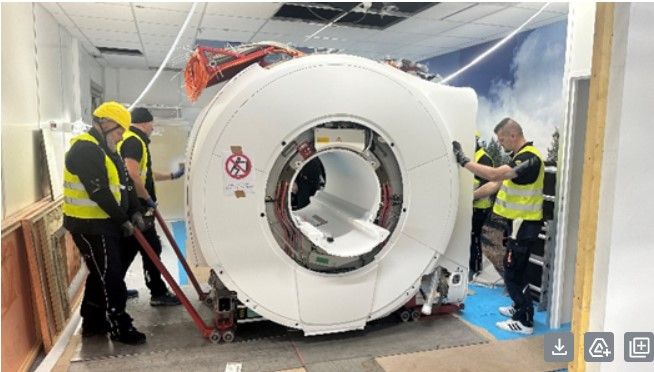A new MRI installed at the Carémeau University Hospital in Nîmes

Cette IRM permettra de développer l’imagerie cardiaque.
This Tuesday, April 16, the University Hospital received its new Sola MRI for better emergency management. A spectacular event which required careful coordination.
At the beginning of April, the Nîmes University Hospital separated its 3T* Skyra MRI to make way for a new machine: the Sola 1.5T MRI, more efficient in the field of cardiology.
The radiology department of the Nîmes University Hospital works with a 3T MRI in neuroscience, a 1.5T MRI shared with the liberals in the oncology building, a 1.5T MRI in the emergency room and formerly a 3T MRI (recently deposited). Emergency requests are high, particularly in neurology in the context of suspected strokes.
An MRI replacement for what to do?
The demand for cardiologists is high for ischemic heart disease, cardiomyopathy, congenital heart disease, cardiac tumors, etc. The replacement of the 3T MRI with a 1.5T MRI will allow more versatility and will be more dedicated to emergencies which are increasing with, in particular, the shortage of supply in the territory. This new 1.5T MRI will make it possible to develop cardiac imaging at Nîmes University Hospital while responding to abdominal MRI examinations.

The machine was installed on April 16, an operation that required careful coordination.
A large-scale operation
This April 16, the crane of the new MRI took place from the Carémeau fire station, mobilizing several services from the Nîmes University Hospital. The security teams, in coordination with the crane, aimed to evacuate and secure the footbridge area. This spectacular operation demonstrates the formidable synchronization of the CHU teams and external partners.
"The Nîmes University Hospital is investing in this new 1.5T MRI, versatile and latest generation, equipped in particular with very high gradients and sequences doped with l&rsquo ;artificial intelligence, making it possible to improve and accelerate patient care, and to develop cardiac imaging, indicates Yannick Le Manac&rsquo ;h, biomedical engineer at Nîmes University Hospital.




